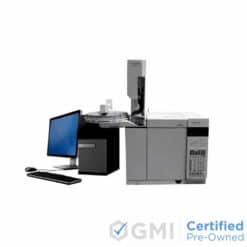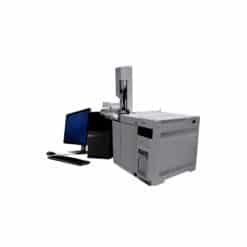Laboratory Equipment
Introduction to Gas Chromatography (GC): What it Is and Its Importance
Introduction
Gas Chromatography (GC) is a powerful analytical technique crucial in various scientific and industrial fields, including chemistry, pharmaceuticals, environmental science, and food analysis. It allows scientists and researchers to separate, identify, and quantify the components of complex mixtures with remarkable precision. This blog post will explore what GC is, how it works, and why it is crucial in today’s analytical landscape.
Understanding Gas Chromatography
At its core, Gas Chromatography is a separation technique that exploits the interactions between molecules and a stationary phase to separate chemical compounds in a mixture. Here’s a simplified breakdown of how GC works:
- Sample Injection: A small sample of the mixture to be analyzed is injected into a column, typically a long, narrow tube.
- Vaporization: If the sample is not already in the gas phase, it is vaporized upon injection into the column.
- Separation: The column contains a stationary phase, a solid or a liquid coated onto a solid support. As the sample travels through the column, the various compounds in the mixture interact differently with the stationary phase based on their chemical properties. This interaction causes the compounds to separate over time.
- Detection: As the separated compounds exit the column, they pass through a detector, which records the concentration of each compound. Common detectors include Flame Ionization Detector (FID), Mass Spectrometry (MS), and Thermal Conductivity Detector (TCD).
- Data Analysis: The data collected from the detector is analyzed to determine the identity and quantity of each compound in the sample.
The Importance of Gas Chromatography
- Precision and Accuracy: GC offers exceptional precision and accuracy in analyzing complex mixtures. Researchers can identify and quantify even trace amounts of compounds with high confidence, making it invaluable in various industries.
- Wide Range of Applications: GC is widely used in a diverse range of applications, including environmental monitoring (detecting pollutants in air and water), food safety (identifying contaminants and additives), pharmaceuticals (assaying drug purity), and forensic science (analyzing blood or urine samples for drugs and toxins).
- Research and Development: In research and development, GC helps scientists investigate new compounds, optimize chemical processes, and study reaction kinetics. It plays a critical role in the development of new products and technologies.
- Quality Control: GC is essential for quality control in manufacturing industries such as petrochemicals and food production. It ensures that products meet specified purity and safety standards.
- Environmental Impact Assessment: GC helps assess the impact of industrial processes on the environment by detecting and quantifying emissions and pollutants, contributing to better environmental management.
- Healthcare and Clinical Analysis: In healthcare, GC is used for clinical diagnostics, drug testing, and monitoring disease markers in patients’ biological samples.
Conclusion
Gas Chromatography is a versatile and indispensable analytical technique with various applications across various industries. Its ability to provide precise separation, identification, and quantification of compounds makes it an essential tool for researchers, quality control experts, environmental scientists, and healthcare professionals. As technology advances, GC will likely play an even more significant role in solving complex analytical challenges, driving innovation, and ensuring the safety and quality of products and processes in our modern world.







